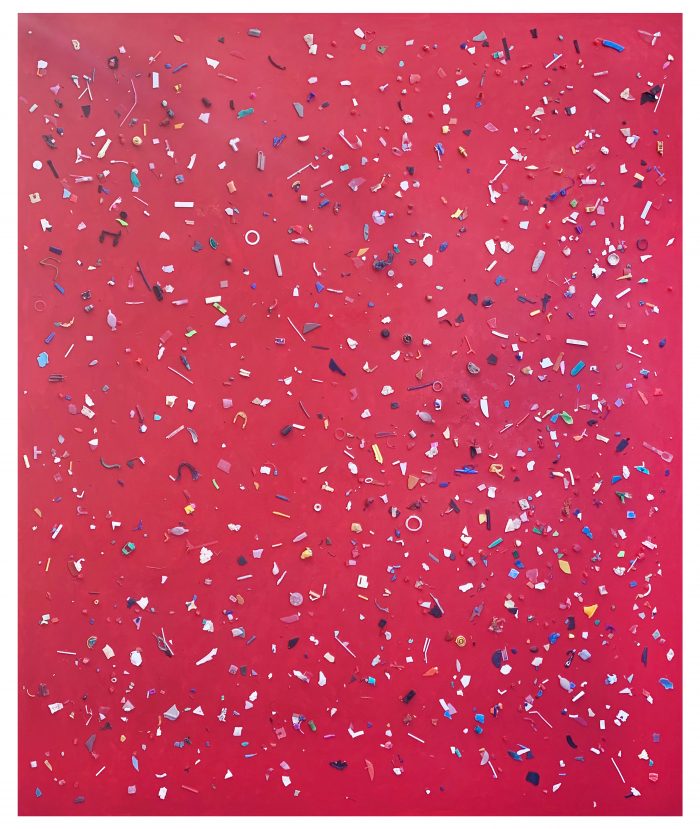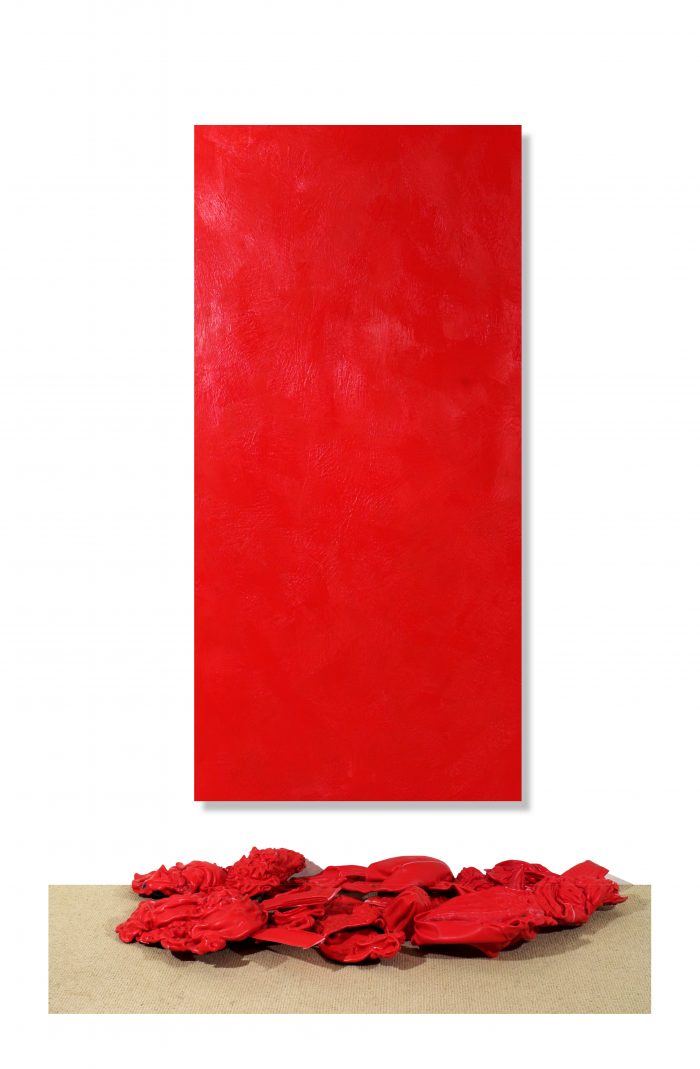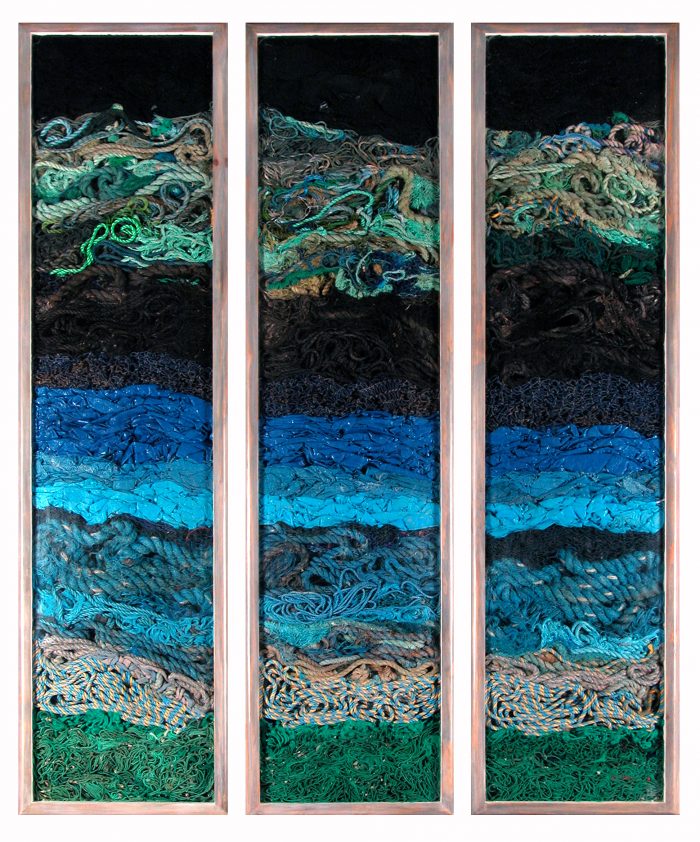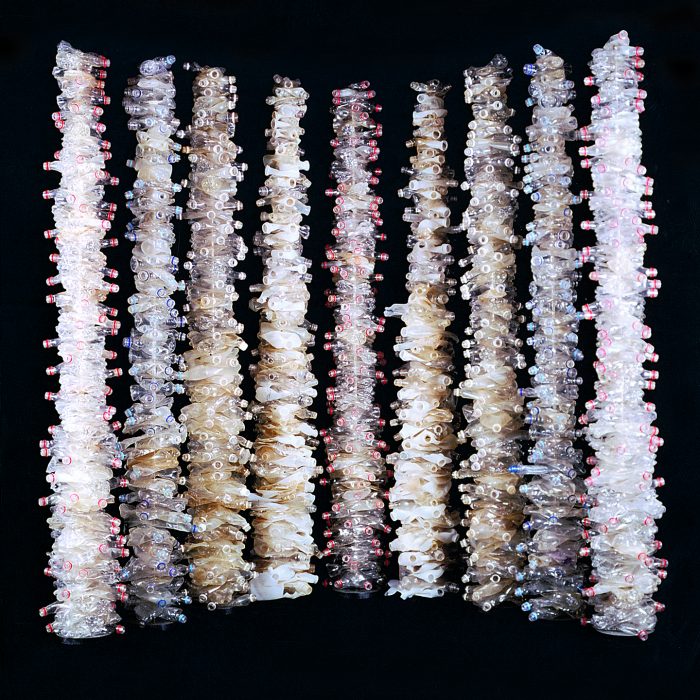Dr. John Dahlsen is a contemporary environmental artist and author whose work examines the passage of time in the landscape and the place of humankind within it by working with found objects, primarily ocean trash, to create abstract compositions. He won Australia’s oldest art award, the Wynne Prize, in 2000 at the Art Gallery of NSW and four years later his art represented Australia at the Athens Olympics. He’s also the author of An Artist’s Guide to a Successful Career and An Accidental Environmental Artist. Dahlsen currently lectures in Visual Art at the University of Canberra TAFE Southbank Brisbane campus.

Internal Detail 2019
You describe yourself as an environmental artist. How do you see the artist’s role in the fight to protect our earth?
The artist’s role in the fight to protect our earth is creating art that makes a difference and has a social conscience through promoting environmental awareness. At the same time, art should share a positive message about beauty that can be gained from the aesthetic experience of appreciating art, as well as giving examples of how we can recycle and reuse in creative ways. My artworks exemplify a commitment as an artist to express contemporary social and environmental concerns. By presenting this to the public, it will hopefully have people thinking about the deeper meaning of the work—in particular, the environmental issues we currently face.

Thong Totems
One of your series is simply named “Purge.” What does this word signify to you? And who is doing the purging: you or nature?
The “Purge” title refers to a body of work I created, based on the subject matter of plastic “purges,” which is machine end waste from plastic fabrication. In this series, plastic fabricator waste is painted. These objects are by-products of everything plastic, they are the plastic run before or after a hairbrush, juice bottle or chair is made. They represent everything and nothing. The plastic in its petroleum state has undergone millions of years of evolution to get to this stage. And then it is discarded as a by-product of societal needs. The work concentrates on cycles, momentum and the multiple.
Essentially, there is an exploration of the duality of meaning and perception and the illusion that is created in between. There is the presentation of an image of a non-object, in a painting of an informal Formalist sculpture. The paintings create the profile of a solid sculpture, molded and plied to present the essence of formalism. The subject of the paintings, exhibit abstract geometrical imagery and constructivist diagramming of space that is playfully organic and blob-like.

Red Purge – Installation
In many of your pieces, such as your “Assemblages,” you group materials of the same color to create larger abstract pieces. Why do you choose this process?
By grouping large areas of similar colors, after an extensive sorting process in my studio, I am able to effectively use three-dimensional objects (usually plastic pieces) and make them have the appearance of two dimensions, as I show them as assemblage works on the wall. By doing this, the micro always is a major influence, as it essentially creates larger images through this process.
The assemblage artworks are thematically based on environmental issues, taking society’s discarded everyday objects and transforming them into formal compositions. These recycled materials have been used to convey the history and memory of a place, to comment on the human experience of place, beauty, degradation of the environment and the inspiration possible with recycling through a positive aesthetic experience.

Blue Rope
Although the message and content of your work are often recognizable, your visual language is mostly within the world of abstraction. How do you see abstraction as being able to express reality and the emotions of life?
These are elements that are very important to me as an artist, including the meeting of abstraction and figuration. During my twenty years or so as a painter prior to working with found objects, I was very interested in these two aspects meeting and would often describe the work I was involved with then as semi-abstract. What I have been doing in my work with found plastics has provided the perfect opportunity to create the fusion of these two elements: creating abstract and semi-abstract images through the use of figurative objects, which are the plastics themselves.
I would say that my work is very multi-dimensional. The intention is for it to contain both a deep reflection on life, which includes humanity’s current predicament with the environment, while also expressing a positive aesthetic, through the composition and color of the artworks. By combining a multiplicity of visual and conceptual elements, my work is able to express multiple emotional states at once. This, I believe, negates any necessity for highly figurative signposts within the work in order for it to be successful either individually or as a body of work.
The work reflects on the role of the environmental artist and art practice at the end of the second decade of the 21st century. This is during a time when damage to the environment and economic choices by the government and big business continue to challenge the ideals of environmentalism. The art protests against recklessness on the part of policymakers, while building an aesthetic appreciation of the artwork produced, contributing to new ways of seeing environmental problems.

Coke Totems
To learn more about John Dahlsen, and his work as an environmental artist visit the following links.
Website: http://www.johndahlsen.com
Youtube: John Dahlsen
Facebook: JohnDahlsenArt
Author: Carola Dixon
Editor: Dena Silver